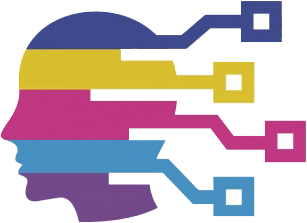For years, Windows has remained the unchallenged standard for PC gaming, synonymous with compatibility, performance, and sheer market dominance. However, recent evaluations comparing SteamOS—a Linux-based operating system developed by Valve—and Windows on the Lenovo Legion Go S handheld device have shattered this long-held assumption. Contrary to expectations, SteamOS is not only holding its ground but is demonstrably outperforming Windows in numerous gaming benchmarks. This development, emerging from rigorous third-party testing and multi-reviewer assessments, signals a potent disruption in how we view gaming platforms, potentially heralding a new era where alternative operating systems become viable, and maybe even preferable, choices for gamers.
Unprecedented Performance Metrics on the Lenovo Legion Go S
The Lenovo Legion Go S serves as a critical testbed in this evaluation precisely because it is one of the first devices to offer official driver support for both Windows and SteamOS, effectively removing the usual disparity caused by less optimized hardware-software synergy. This parity enabled an unprecedented head-to-head performance showdown across a suite of demanding modern games including Cyberpunk 2077, Returnal, Borderlands 3, and Doom: The Dark Ages, among others.
Analyzing reports from trusted sources such as Ars Technica, YouTuber Dave2D, and PC Gamer’s Jacob Fox reveals a clear pattern: out of a combined total of 12 games assessed across these reviewers, SteamOS won outright in ten and drew even in two, with zero losses against Windows. This is remarkable and smashes expectations. In one instance, Returnal on SteamOS outperformed Windows by a staggering 17 frames per second at 800p settings, a margin that should not be overlooked in a gaming context where every frame counts. Similarly, consistent leads in titles like Cyberpunk 2077 and Hitman 3 reinforce SteamOS as more than just a niche experiment.
Why Is SteamOS Suddenly Taking the Lead?
One might ask: with Windows’ entrenched ecosystem and mature drivers, how is SteamOS outperforming the industry giant? The answer is partly technical, partly philosophical. Windows has grown increasingly burdened by “bloat”—unnecessary background processes, telemetry, integrated AI features, and a cumbersome UI that collectively drain resources and introduce system inefficiencies, especially noticeable on low-power handheld hardware. The curious example of the Windows search bar prioritizing web results over local files epitomizes this disconnect from user-first design.
In contrast, SteamOS follows the Linux philosophy of lean, dedicated functionality and prioritizes gaming performance through optimized, streamlined drivers and less intrusive system services. While Linux gaming suffered historically from compatibility issues and lack of support, Valve’s stewardship has been transformative. Their constant commitment to broadening hardware drivers and improving Proton compatibility layers to support Windows-only games has steadily erased the gap. The Legion Go S’s official support is the visible manifestation of this maturing ecosystem.
Barriers Still to Overcome: Compatibility and Ecosystem Maturity
Despite these impressive benchmarks, SteamOS isn’t without its challenges. The main obstacles are a more limited hardware support matrix and game compatibility issues stemming primarily from anti-cheat software that have yet to adapt fully to Linux-based platforms. Many popular multiplayer titles implement system-level anti-cheat mechanisms designed with Windows in mind, creating friction or incompatibility when running under SteamOS environments. This reality confines SteamOS to a narrower but growing roster of titles where players can confidently expect flawless operation.
Moreover, while PC enthusiasts can currently install SteamOS onto desktops by leveraging Steam Deck recovery images or other workarounds, these methods remain unofficial, cumbersome, and do not guarantee the level of performance seen on native hardware like the Legion Go S. For SteamOS to truly challenge Windows as a desktop gaming OS, Valve must accelerate easier, official installation avenues accompanied by broad hardware certification and enhanced support for peripheral devices.
The Broader Implications for the Future of Gaming
Valve’s success with SteamOS speaks to a growing discontent among gamers and tech enthusiasts frustrated with Windows’ direction. The competition extends beyond just frame rates—it’s about control, customization, and the philosophy of computing. SteamOS offers a promise of a more focused, less intrusive gaming environment while steadily expanding compatibility to rival Windows’s vast catalog.
This juxtaposition signifies more than a passing trend. If Valve continues to deliver on hardware support and software compatibility fronts, SteamOS could not only carve out a significant niche in gaming but also push Microsoft to rethink their approach to Windows in the PC gaming context. Microsoft’s promises of trimming Windows “bloat” for future Xbox-esque handheld experiences are audacious but face skepticism in light of their historical track record.
Ultimately, the unfolding story around SteamOS and the Lenovo Legion Go S could be an inflection point. It challenges entrenched assumptions and invites the gaming community to rethink what the ideal gaming platform looks like—leaner, more performance-focused, and less encumbered by unnecessary complexity. For those of us disillusioned with Windows’ sluggishness and overreach, SteamOS is transitioning from a theoretical alternative to a genuine option worth serious consideration.

